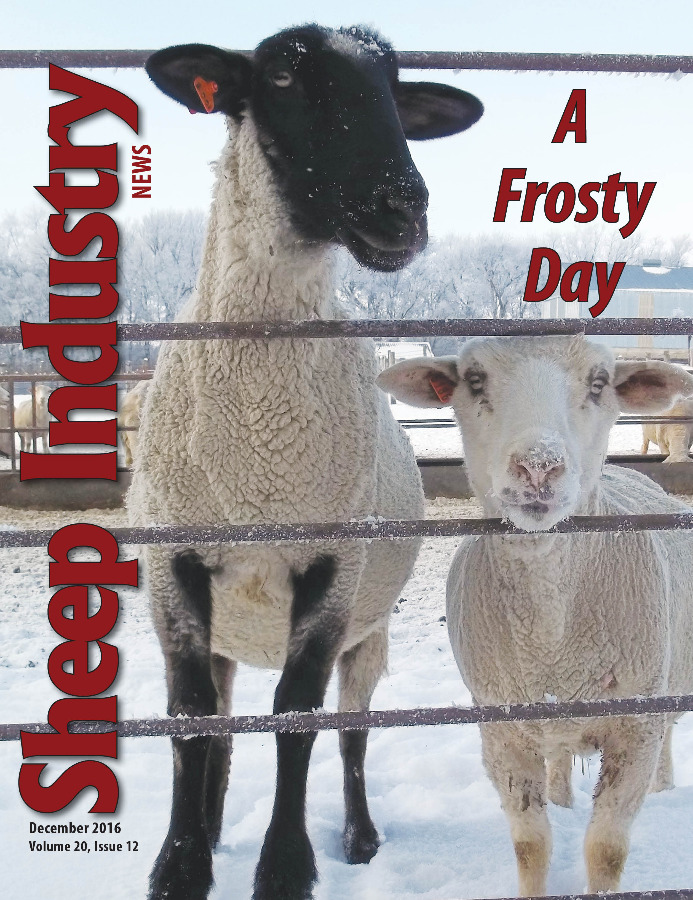Building the Flock in Afghanistan
STEVE BYRNS
AgriLife Today
Afghanistan and West Texas have more in common than one might imagine, noted a Texas A&M AgriLife Research scientist, fresh from a trip to the South Asian country.
Dr. John Walker, AgriLife Research resident director at San Angelo, was among a group that traveled to Afghanistan this fall to participate in an Afghan agricultural extension project. The effort was part of a three-year, $20 million project in cooperation with the University of California – Davis, Washington State University, Purdue University, Maryland State University and the Norman Borlaug Institute for International Agriculture at Texas A&M University in College Station.
“Our purpose for going there was to assist in training their county extension agents in sheep production and to help them with the analysis of information they’re getting from their provincial model farms,” Walker said.
That concept is very similar to the relationship his agency has with the Texas A&M AgriLife Extension Service, he said. AgriLife Research develops the technology and AgriLife Extension agents disseminate, explain and demonstrate it to producers, largely on the grassroots level throughout Texas.
“The take home message is they have a lot of issues, one of the biggest being that the country has as many people as Texas does with about the same land area. But because it’s so mountainous, they have a very limited amount of land on which to grow food and fiber.”
Afghanistan has about 8.8 million sheep and 7.3 million goats, which exceeds the total number of these animals for the U.S., he said. There are two different livestock production systems in the country, sedentary and nomadic, with about a third of the livestock in the latter.
Walker said about 35 percent is classified as barren land, as in solid rock and unable to grow anything. He said the temperature was very similar to San Angelo though Kabul, where he spent the most time, lies at 5,800 feet in elevation. His other stops included Mazar-i-Sharif at 1,100 feet above sea level and Jalalabad at 1,900 feet in elevation. Most of the country has a much higher elevation, he said.
“About 40 percent of Afghanistan is classified as being grazeable, but frankly I didn’t see any, because the areas where I was were irrigated valleys with land that can be quite productive. They do seem to have a lot of water, but their use of it is rather inefficient as all the irrigation I saw was flood irrigation.”
Most of the livestock were fat-tailed sheep used for meat and karakul sheep used for meat and pelts for the karakul hat, which is very popular there, Walker said.
“Though the sheep breeds were different, their issues didn’t vary much from those producers face here in West Texas,” he said. “Getting a lamb crop and being able to raise a good lamb crop are major concerns for them, just as they are for us. I think marketing may be their bigger problem though. They don’t have the established type of markets there that we have here.”
Most of the research Walker saw in Afghanistan was evaluating and improving forage varieties so they can increase the feed resources they have, particularly during the wintertime.
“Apparently, they don’t have a culture of putting up hay like we do – though they do have places to buy grain supplements – but they typically don’t put up hay,” he said. “The hay and ensilage I did see being harvested was done in a very primitive manner, all by hand, no tractors. They actually bring the hay to a hand-operated press to be baled, and silage is often made in barrels. Both processes are slow, primitive and labor intensive with a limited output of product resulting.
“Though they have a lot of issues facing them, I was impressed by the people, who were very friendly, attentive and appreciative,” he said. “Our overall goal was to train their extension agents to do what our extension agents do and that’s provide information and technology to their farmers. Equipped with this information, hopefully, they’ll be able to increase their level of productivity and become more self-sufficient in their food and fiber production.”


